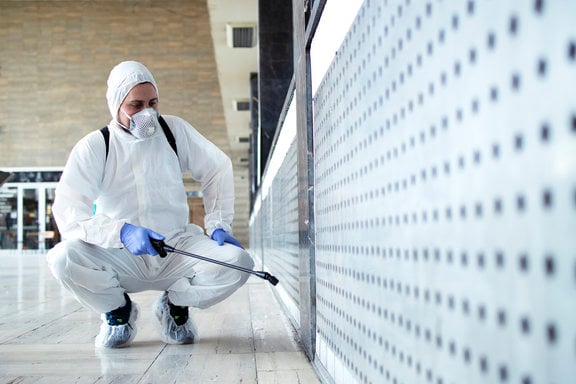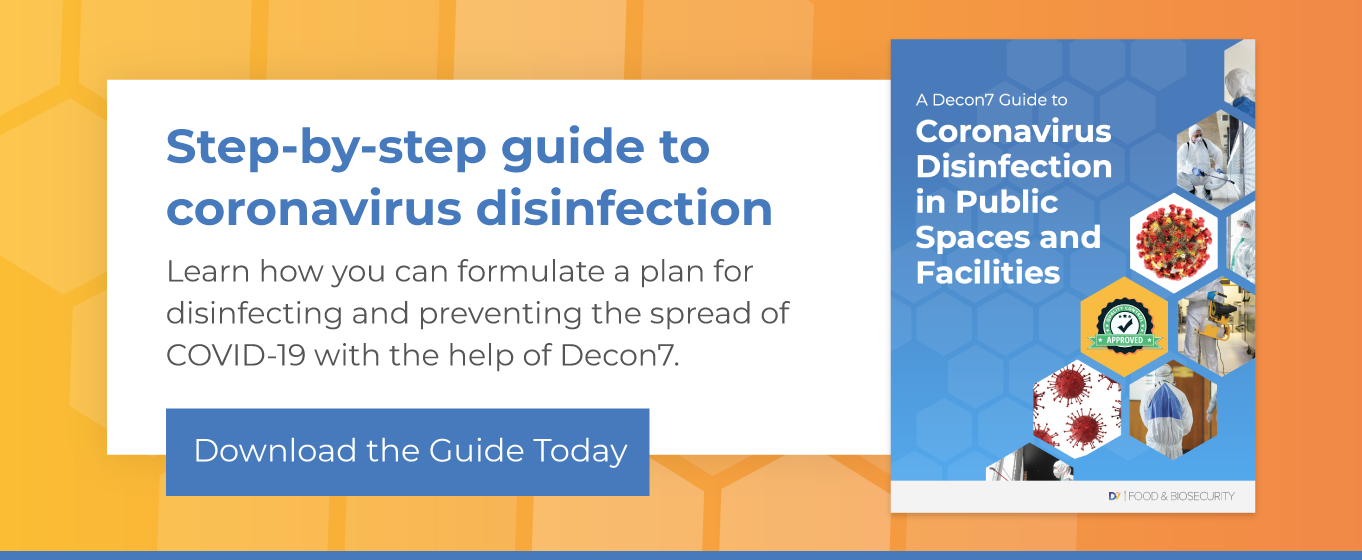
The general method for application of D7 for SARS-CoV-2 disinfection operations is as follows:
-
- Facilities or areas should be fogged with D7 using a handheld fogger or gravity-fed, compressed air-driven paint sprayer. This should include all spaces in the facility or area including the HVAC system, if possible. Personnel involved in fogging should wear appropriate PPE (respirators, gloves, and suit) and persons without PPE should not remain in the area where fogging is occurring. The area that has been fogged is safe to reoccupy without PPE when the fog droplets are no longer airborne which will vary depending on conditions such as the type of fogger used and the amount of ventilation in the area.
- Microfiber wipes should be wetted with D7 and used to wipe-down and disinfect all “frequent touch points” or areas of a facility (e.g., stair rails, door knobs, escalator rails, elevator buttons, etc.). In some cases, direct spraying of these frequent touch areas with the paint sprayer or other spraying devices can be used instead of the microfiber wipes. Personnel conducting the frequent touch point disinfection should also be in the appropriate PPE (masks and gloves). Any food contact or food preparation surfaces should be rinsed with water approximately 10 minutes after D7 application. The disinfected areas and touch points are safe to reuse when the D7 is dry.
- Facilities or areas should be fogged with D7 using a handheld fogger or gravity-fed, compressed air-driven paint sprayer. This should include all spaces in the facility or area including the HVAC system, if possible. Personnel involved in fogging should wear appropriate PPE (respirators, gloves, and suit) and persons without PPE should not remain in the area where fogging is occurring. The area that has been fogged is safe to reoccupy without PPE when the fog droplets are no longer airborne which will vary depending on conditions such as the type of fogger used and the amount of ventilation in the area.
The application frequency of D7 for SARS-CoV-2 disinfection depends on several factors including:
-
- The type of facility or area.
- The type of population in a facility or area (e.g., young vs. elderly, immune compromised, etc.).
- The frequency and level of use of a facility or area.
- If a known or suspected contamination event has occurred in a facility or area.
In general, the recommended application frequency for D7 is as follows:
-
- Fogging of D7 should occur each evening or at some other convenient time when the facility is unoccupied or has low occupancy.
- Disinfection of frequent touch points should occur every 4-6 hours if possible.
- In high risk facilities such as elderly care facilities, medical facilities, and first responder facilities, the D7 disinfection rate should be increased. In this case, disinfection of frequent touch points should occur every 2-3 hours, if possible.
- In high use areas (e.g., the checkout areas of stores, high use areas in factories, reception areas in medical facilities, etc.), the D7 disinfection rate should be increased and touch point disinfection should occur every 2-3 hours, if possible.
- In facilities or areas where there is a person who is known or suspected to be infected with SARS-CoV-2, touch point disinfection with D7 should occur immediately after the person exists the area and before the area is re-used by other people. The touch point disinfection process should be expanded to include surfaces within 6 feet of where the known or suspected infected person occupied using microfiber wipes wetted with D7 or a handheld sprayer.
These application guidelines are general in nature and should be modified based on the factors described above.

